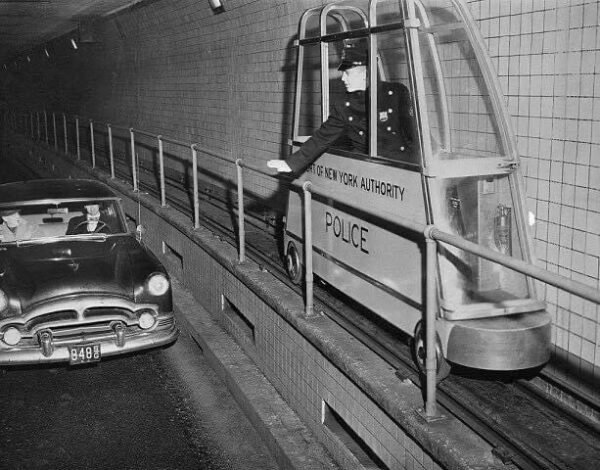
What Was the Victorian Flatulence Device?
In the stiff, etiquette-bound world of the 19th century, even passing gas was a scandal—especially for ladies in petticoats and corsets. Enter a secret gadget: a flatulence filter (sometimes dubbed the “fart suppressor”), worn secretly under bustles or layers of skirts. This invention wasn’t just about smell—it was designed to muffle sound too, letting ladies continue conversations, dances, and afternoon teas without causing a scene. The lush gowns of the era made it easy to hide—smoothing out social awkwardness with a discreet whiffless whisper.

Why Was It Invented?
Victorian society was built on two pillars: decorum and denial. Natural bodily functions? Definitely to be denied. A woman’s reputation could be ruined by something as harmless as a little gas. These filters allowed women to maintain their dignity in crowded parlors and elegant ballrooms. Imagine enjoying an evening dance or political gossip without giving anyone a reason to blush—or snicker. Though we may find it quirky today, the device reflects a genuine solution to a real social pressure.

How Did This Gas-Filtering Gadget Actually Work?
Believe it or not, this wasn’t just some lacy patch sewn into bloomers. The device—often called a “charcoal pad” or discreetly referred to in medical supply ads—used activated charcoal or absorbent fabric to soak up odors and soften sounds. Some had clever placement straps so they could be worn under petticoats and bustles, almost like a Victorian muffler… just for your backside.
Think of it as the 19th-century version of a whoopee cushion’s opposite—silent and scent-proof. There was even mention in etiquette books on how to deal with such matters discreetly, showing this wasn’t as rare or silly as it may seem today. In a world without Pepto-Bismol or Gas-X, this was cutting-edge dignity.
We’ve covered other surprising inventions of the era too, like the incredibly awkward yet real hands-free smoking robot from Sears decades later. Human creativity never disappoints when comfort meets embarrassment.

Why Nobody Talked About It (But Everyone Knew)
Back then, talking openly about digestion or gas—especially for women—was practically forbidden. Victorian society held tight to an image of ladylike perfection, and bodily functions were far from part of that image.
Yet ironically, everyone knew it happened. That’s why these gas-absorbing pads became quietly popular among upper-class women. They weren’t exactly advertised in fashion catalogs, but whispers spread through social circles. Ladies’ maids often helped discreetly attach the device before a dance or formal event.
It’s not unlike how folks dealt with other awkward needs. For instance, we explored how women managed intense discomfort during travel in the 1800s in this glimpse into early mail delivery life—another area where privacy met practicality.
This device was one more example of how people adapted creatively to cultural pressure, even if they couldn’t speak openly about what they were solving.

How Did It Actually Work?
The design was surprisingly clever. This device—sometimes just called a “ladies’ anti-flatulence pad”—was made of absorbent charcoal-lined material that could neutralize odor and muffle sound. It was worn underneath layers of clothing, secured by straps or tucked into undergarments.
Thanks to the heavy, multi-layered dresses common in the 1800s, the device stayed out of sight while working quietly in the background—literally. It didn’t interfere with dancing, walking, or sitting down. It was the unsung hero of the ballroom floor.
You’ll notice this fits right in with other surprising historical inventions like the robot smoker from a vintage Sears catalog—quirky but practical tools made to solve awkward problems of the day.

When Did This Go Out of Style?
Like many things from the Victorian era, the decline of this device was tied to changing fashion and advancing science. As women’s clothing became less bulky and layered in the early 20th century, there was less room to hide these types of contraptions.
Plus, with medical advances, more attention was being paid to gut health and diet, reducing the need for sound-and-smell blockers altogether. Culture also began shifting (slowly) toward a less rigid view of femininity, where women didn’t have to pretend to be porcelain dolls.
And just like laundry in the early 1900s faded into history with the arrival of washing machines, these pads disappeared as society—and technology—moved forward.

What This Says About Women’s Lives in the 1800s
This strange little device actually says a lot about the pressures women faced in the 19th century. Society expected ladies—especially those in high society—to be dainty, delicate, and almost otherworldly in their appearance and behavior.
Even something as natural as passing gas was seen as a scandalous act that could shatter a woman’s image. That’s why products like this existed: not just to absorb odors or noise, but to protect a woman’s reputation. Imagine going through your day not only managing corsets and social etiquette but also relying on a secret charcoal pad tucked beneath your layers.
This extreme attention to public appearance isn’t far off from other stories we’ve covered, like why no one smiled in old family portraits—a reflection of the social rules and image control that defined the time.

Could This Odd Gadget Make a Comeback?
Strangely enough… maybe. In a world where we’ve seen the return of vintage everything—from typewriters to waistcoats—novelty versions of these odor-muffling devices might just find a new niche. Imagine a modern version marketed as a “ballroom discreet” accessory or even just a quirky gag gift.
Of course, we’ve come a long way in embracing the fact that our bodies do what bodies do. But the concept of silent, scent-blocking protection? It’s already baked into things like charcoal underwear liners and odor-control pads—just with less lace and no hoop skirts.
You could say this is yet another example of how invention often walks hand-in-hand with insecurity, like many other gadgets in history that aimed to hide the human experience rather than celebrate it.

The Hidden History of 19th Century Etiquette Gadgets
From corsets that squeezed organs to fainting couches built into parlor rooms, the 1800s were filled with tools designed to uphold society’s strict ideas of elegance and “proper” behavior. This discreet anti-gas device is just another example of how far people went to avoid embarrassment—even when it meant strapping on a charcoal pad under a multi-layered gown.
It may sound funny today, but it reminds us how deeply social pressure shaped daily life, especially for women. And like many odd inventions of the era, this one faded into obscurity once people became more open and less uptight about natural things.
Just like we explored in the truth about laundry in the early 1900s and what women wore under those big dresses, the details of daily life back then weren’t just about fashion—they were about survival, appearance, and fitting into a world with very little wiggle room.
AThat’s what makes this story about the charcoal gas-absorbing device more than a historical oddity—it’s a reminder of the quiet burdens carried behind the scenes of the most polished appearances.
As an Amazon Associate we earn from qualifying purchases through some links in our articles.




